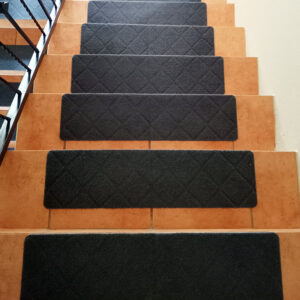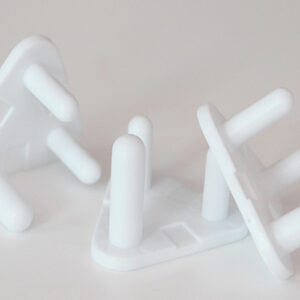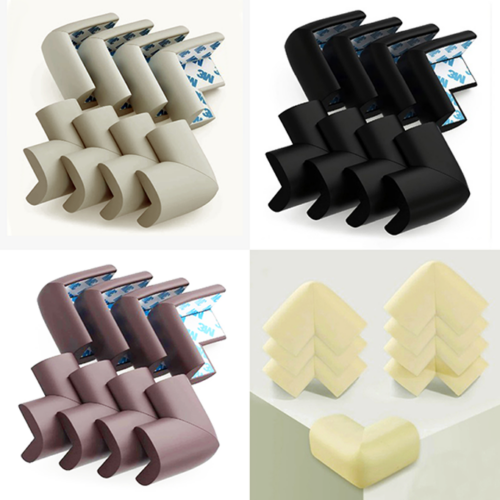Create a Secure Home Environment by Safeguarding Staircases and Entrances for Your Children
Staircases can present significant risks to young children, particularly in homes that include basements. To effectively childproof these areas, it is crucial to secure staircases and entrances using the most effective strategies for childproofing basements. This proactive approach can prevent many accidents, allowing families to feel more at ease in their homes.
By identifying and addressing these potential hazards, parents can create a safer living environment that significantly diminishes the likelihood of accidents and injuries. This commitment to safety not only protects children from potential harm but also instils invaluable peace of mind in parents, enabling families to relish their home environments without the persistent worry of unexpected dangers lurking around.
Boost Child Safety by Installing Reliable Safety Gates
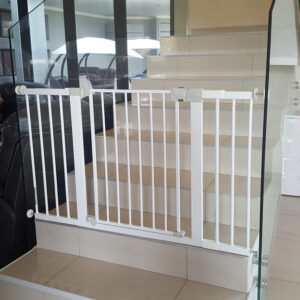 Safety gates are essential barriers that should be strategically positioned at the top and bottom of basement staircases. By selecting durable safety gates, you can significantly mitigate the risk of accidental falls. When choosing safety gates, focus on those that meet recognised safety standards while being easy for adults to operate yet challenging for young children.
Safety gates are essential barriers that should be strategically positioned at the top and bottom of basement staircases. By selecting durable safety gates, you can significantly mitigate the risk of accidental falls. When choosing safety gates, focus on those that meet recognised safety standards while being easy for adults to operate yet challenging for young children.
In South Africa, a variety of options are available, including pressure-mounted gates, which are ideal when drilling into walls isn't feasible. It is vital to choose a gate that is tall enough and incorporates a childproof latch. Regular inspections of these gates are essential to verify they remain secure, particularly in high-traffic areas where they are frequently used.
By establishing a dependable barrier, you not only protect inquisitive toddlers but also assist in defining their play areas. Teaching children about the purpose of these safety gates can foster compliance with safety measures and enhance their understanding of what constitutes a safe space within the home.
Exploring local home improvement retailers in South Africa, such as Builders Warehouse or Leroy Merlin, can yield a range of safety gate options tailored to your specific needs, enhancing both safety and convenience for your household.
Ensure Child Safety by Conducting Regular Inspections of Handrails
Loose handrails on staircases can lead to potentially severe accidents. Conducting thorough inspections of handrails in your basement is essential to confirm they are securely attached. The height of these handrails is equally important; they should be easily reachable for children while providing adequate support for adults.
If necessary, reinforce handrails to ensure they can adequately support the weight of a child pulling themselves up, thereby enhancing safety for everyone who uses them. Regular maintenance of handrails is crucial in ensuring they remain a reliable safety feature.
In South Africa, many homes exhibit unique architectural styles that may necessitate customised solutions for handrail installation. Hiring a qualified contractor or handyman can help ensure that handrails not only comply with safety standards but also enhance the overall aesthetic appeal of your residence.
Conducting routine inspections and maintenance of handrails is vital, as these features play a significant role in crafting a safer living environment for your children, while also providing parents with peace of mind regarding their safety.
Enhance Safety by Implementing Non-Slip Mats
The use of non-slip mats is critical for preventing slips and falls, particularly on staircases and at entrances. In South Africa, unpredictable weather conditions can often lead to wet and slippery surfaces, which increase the likelihood of accidents occurring.
Investing in high-quality non-slip mats specifically designed for stair use is essential. Look for mats with rubber backing to ensure they remain securely in place, providing the necessary grip for both children and adults alike.
These mats should also facilitate easy cleaning, as high foot traffic can lead to dirt accumulation, which may compromise safety. Regularly inspecting and replacing worn-out mats is crucial to maintaining their effectiveness and protective qualities.
Furthermore, consider installing non-slip strips on your stairs to further enhance safety. These strips not only improve grip but also serve as visual indicators for children, highlighting safe areas to step on.
Improve Visibility and Safety with Adequate Lighting on Staircases and Entrances
Proper lighting can significantly reduce the risk of accidents on staircases and at entrances. Insufficient lighting creates a hazardous environment, especially during the evening when visibility is compromised. Installing bright LED lights along staircases and entrances can remarkably boost safety.
Incorporating motion sensor lights provides added convenience by automatically illuminating pathways when someone approaches, ensuring these areas are consistently well-lit.
Using warm-toned lights can create a welcoming atmosphere while also enhancing safety. Review the lighting in your basement and consider adding additional fixtures where necessary to improve visibility throughout.
Where possible, integrating natural light through large windows or skylights can also contribute to creating safer, more inviting spaces for families and children alike.
Maintain Safety Through Routine Inspections of Staircases
Regular inspections of staircases are critical for upholding safety standards. Frequently check for any damage such as loose steps, worn carpeting, or other signs of wear and tear, and address these issues promptly to prevent accidents.
In South Africa, where homes may experience varied weather conditions, including heavy rain, it is vital to check for water damage or erosion to ensure the safety of your stairs.
Establishing a thorough maintenance schedule is essential for keeping your stairs safe throughout the year. This schedule should involve checking for wear on handrails, ensuring non-slip mats are intact, and confirming that lighting is functioning optimally.
Documenting any repairs or maintenance performed can aid in tracking changes and ensuring that safety remains a top priority in your home.
Implement Robust Electrical Safety Measures Across Your Home
Maintaining electrical safety is paramount in every household, especially in basements where wiring may be more exposed to potential hazards. The best methods to childproof basements must incorporate rigorous electrical safety measures to protect children from potential dangers that could lead to severe injuries or even fatalities.
Enhance Safety by Installing Outlet Covers and Tamper-Resistant Switches
Unprotected electrical outlets can attract children’s curiosity, often resulting in dangerous situations. Installing tamper-resistant electrical outlets is a proactive measure that can prevent children from inserting objects into sockets, thereby significantly reducing the risk of electric shocks.
These outlets are equipped with built-in shutters that only open when a two-pronged plug is inserted, adding an additional layer of safety.
In addition to tamper-resistant outlets, consider using outlet covers for any unused sockets in your home. This simple yet effective solution can provide peace of mind, especially in a basement where children may spend considerable amounts of time.
Regular inspections of outlets for signs of wear or damage are essential. Frayed wires or exposed connections can pose serious safety risks that must be addressed immediately to maintain a secure environment.
Conceal Loose Cords and Wires to Minimise Hazards
Loose cords and wires can present both a tripping hazard and a source of intrigue for children. To effectively mitigate these risks, consider using cord concealers to hide cables along walls and baseboards. These products can prevent children from pulling on cords, which may lead to accidents or injuries.
In South Africa, where many homes feature unique layouts, investing in custom cable management solutions may be necessary to suit your space. Additionally, using furniture to block access to cords can serve as a practical strategy.
Regularly inspect cords for any signs of damage or wear, and replace them promptly to ensure the ongoing safety of your home environment.
Utilise Surge Protectors to Safeguard Your Electrical Devices
Surge protectors are essential, especially in older homes where electrical systems may not meet contemporary safety standards. Installing surge protectors on all electronic devices can prevent damage caused by power surges, which can pose significant dangers.
These devices not only shield children from potential electrical hazards but also safeguard your appliances from damage due to unexpected power fluctuations.
When selecting surge protectors, opt for models that offer additional features, like circuit breakers or warning lights, as this added layer of protection can provide invaluable peace of mind. Conduct regular checks on your surge protectors to ensure they are functioning correctly, and replace any that show signs of wear or malfunction to maintain optimal safety.
Conduct Routine Inspections of Electrical Appliances for Safety
Electrical appliances require consistent inspections to guarantee they remain safe for use. Regularly check for frayed wires, damaged plugs, or any signs of overheating.
Unplug appliances when they are not in use, and educate children about the importance of not touching or playing with these devices to prevent accidents.
In South Africa, where load shedding can affect the performance of electrical appliances, being vigilant can help you mitigate risks. Implementing a regular check-up routine for your appliances will not only enhance safety but also prolong their lifespan.
If any appliances display signs of damage, consult a qualified electrician for repairs or replacements to ensure safety standards are upheld.
Ensure Furniture and Fixtures Safety in Your Basement
The furniture and fixtures in your basement can potentially present various hazards, particularly for children exploring their surroundings. Adopting the best methods to childproof basements must involve securing furniture and fixtures to prevent accidents and injuries that could arise from accidental tipping or falling objects.
Anchor Heavy Furniture to Prevent Tipping Accidents
Anchoring heavy furniture is crucial in preventing tipping accidents, which can result in serious injuries. Items such as bookshelves, cabinets, and tall dressers should be securely fastened to the wall to prevent them from falling over.
Most hardware stores in South Africa provide anchoring kits that are easy to install and highly effective for this purpose.
When anchoring furniture, ensure you carefully follow the manufacturer’s guidelines for installation. Additionally, the placement of heavy furniture is vital; avoid positioning these items in areas where children can easily climb or reach.
Regularly inspect anchored furniture to ensure it remains securely fastened, checking for any signs of wear or damage that could compromise safety and stability.
Utilise Corner Guards to Protect Against Sharp Edges
Sharp corners on tables and counters can lead to painful bumps and bruises for children. Applying corner guards is an effective strategy to mitigate this risk. These protective covers are straightforward to install and can absorb impact, making falls less likely to result in serious injuries.
In South Africa, corner guards are available in a variety of materials, including rubber and foam, allowing you to select options that align with your aesthetic preferences while enhancing safety. Regularly check these guards for wear and replace them as necessary to maintain a safe environment for children.
Secure Cabinets and Drawers with Child-Proof Locks for Enhanced Protection
Child-proof locks are essential for cabinets and drawers that contain hazardous materials or sharp objects. Installing these locks can prevent children from accessing potentially dangerous items, such as cleaning supplies, tools, or medications, thereby significantly enhancing safety.
When selecting locks, consider options that are easy for adults to operate but challenging for children. Regularly assess the effectiveness of these locks, as wear and tear can diminish their safety features over time.
Engaging children in discussions about the dangers of certain items can also help them learn to respect safety boundaries within the home environment, reinforcing a culture of safety.
Implement Non-Slip Mats Under Furniture to Improve Stability and Safety
Non-slip mats should not be limited to staircases; they are equally important under furniture to prevent slipping. Mats placed underneath rugs and furniture can significantly reduce the risk of accidents by providing a stable grip on hard surfaces. Look for mats made from materials that are specifically designed to adhere securely and prevent slipping.
In homes with children, these mats should be regularly checked for cleanliness and signs of wear. Maintaining a clean environment will help prevent dirt buildup that can lead to slippery surfaces. By using non-slip mats, you can enhance the overall safety of your basement, providing a stable foundation for children to play and explore.
Regularly Check Furniture Stability to Ensure Safety
Routine inspections of furniture for stability are essential to guarantee that it does not pose a risk to children. Wobbly tables, chairs, or benches can lead to falls and injuries. Assess furniture thoroughly, tightening screws and bolts where necessary to ensure they are secure and stable.
In homes with children, teaching them safe play practices around furniture is crucial. Encouraging children to sit rather than climb on furniture will help mitigate risks associated with falls. If any furniture shows significant wear or instability, consider replacing it with more robust options designed for family use, ensuring a safer environment for everyone.
Select Safe Flooring and Surface Materials for Your Basement
The choice of flooring and surface materials in your basement can profoundly affect safety for children. Implementing the best methods to childproof basements involves selecting flooring solutions that minimise hazards and create a safe, welcoming space for play.
Choose Soft Flooring to Cushion Falls and Enhance Safety
Choosing soft flooring materials such as carpeting or padded flooring can significantly cushion falls and decrease the likelihood of injuries. In designated play areas, soft surfaces create a safer environment for children to explore without the risk of serious injury.
Seek carpets or mats made from non-toxic materials that are also durable and easy to clean, ensuring both safety and practicality. When selecting flooring, consider options that are water-resistant, especially in basements prone to dampness.
In South Africa, where homes feature unique designs, it’s important to select flooring that complements your aesthetic while prioritising safety. A well-planned flooring choice can create a warm, inviting space that encourages play and exploration while ensuring safety.
Conduct Routine Hazard Inspections on Flooring Surfaces
Regular inspections of the flooring for hazards should be a routine aspect of home safety practices. Loose tiles, uneven surfaces, or damaged carpeting can pose significant risks for children, leading to trips and falls. Address these issues promptly to maintain a safe play area for your family.
Create a checklist for regular inspections to ensure that every surface is evaluated for potential safety hazards. If you identify any issues, consult professionals for repairs or replacements, particularly in cases where extensive work is needed to restore safety standards in your home.
Maintain Clear Floors to Prevent Trips and Falls in Your Basement
Keeping floor spaces clear is essential for preventing trips and falls. Ensure that toys, clutter, and other items are not left scattered around. Encourage children to assist in tidying up their play areas to instil a sense of responsibility for their surroundings, promoting a safer environment for everyone.
Establishing designated storage solutions for toys can help keep the area organised. In South Africa, consider using colourful bins or crates that engage children and motivate them to put away their belongings after playtime, ensuring a neat and safe space.
Prioritise Window and Door Safety to Enhance Childproofing
Windows and doors are critical areas that require special attention when childproofing a basement. The best methods to childproof basements must include effective measures to ensure that these structures do not pose risks to children, providing a secure and safe living environment.
Install Window Guards to Prevent Falls and Enhance Child Safety
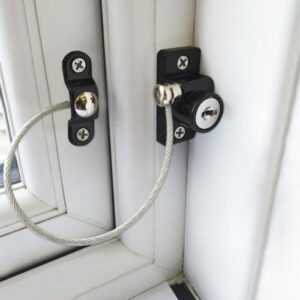 Window guards can be an essential safety feature, particularly for ground-level windows. They effectively prevent children from falling out while playing near open windows, significantly enhancing safety. Ensure that guards are installed according to safety guidelines and allow for easy escape in case of emergencies, striking a balance between security and accessibility.
Window guards can be an essential safety feature, particularly for ground-level windows. They effectively prevent children from falling out while playing near open windows, significantly enhancing safety. Ensure that guards are installed according to safety guidelines and allow for easy escape in case of emergencies, striking a balance between security and accessibility.
In South Africa, many security companies offer professional installation services for window guards that comply with local safety regulations. Conducting regular inspections of these guards is crucial to ensure they remain secure and effective, promptly addressing any damages or wear to maintain optimal safety.
Utilise Door Stoppers to Prevent Injuries from Slamming Doors
Door stoppers can effectively prevent doors from slamming shut, which can lead to injuries, particularly to young children’s fingers. Installing these devices on interior doors, especially those leading to staircases, enhances overall safety within your home. Choose door stoppers that are sturdy, user-friendly, and suitable for your specific door types.
Consider incorporating soft-close mechanisms on doors where applicable. This feature can provide additional safety by preventing doors from slamming shut, thus offering peace of mind for parents of young children who may be in proximity to swinging doors.
Conduct Regular Inspections for Broken Glass on Windows and Doors
Regular inspections of windows and doors for broken or cracked glass are essential for maintaining safety. Broken glass can lead to severe injuries, and even small cracks can compromise the safety of your home. Address any damaged glass immediately through repair or replacement to ensure a secure and safe environment for your family.
In South Africa, where weather conditions can significantly affect the integrity of glass, proactive checks should be a routine part of home maintenance. Consulting professionals for repairs ensures that safety standards are adhered to, protecting your family from potential hazards.
Design a Safe and Engaging Play Area for Your Children
Creating a safe play area in your basement is vital for keeping children engaged without compromising their safety. Implementing the best methods to childproof basements requires thoughtful design choices that foster creativity while ensuring security for your little ones.
Create a Designated Safe Play Zone with Appropriate Furnishings
Designating a specific area for play, furnished with soft furnishings and age-appropriate toys, is an excellent way to encourage safe play. Use rugs or soft mats to visually outline boundaries for play zones, providing a comfortable and secure environment for children to enjoy.
In South Africa, consider incorporating local themes into your play area design to create an engaging atmosphere that resonates with children. Using colours and patterns inspired by local culture can make the space inviting and familiar. Regularly rotating toys can also keep the area interesting and exciting, stimulating creativity and engagement among children.
Incorporate Soft Furnishings for Comfort and Enhanced Safety
Integrating soft furnishings such as bean bags and cushions can create a comfortable and safe play environment. These items can absorb impact during play, making falls less likely to result in injury. Ensure that all soft furnishings are made from non-toxic materials, prioritising children’s health and safety while they play.
Additionally, involve children in discussions about the boundaries of their play within the designated area. Teaching them about the importance of maintaining a tidy play space will instil a sense of responsibility for their surroundings and promote a culture of safety within the home.
Keep Hazardous Items Out of Designated Play Areas
Ensuring that play areas are free from hazardous items such as tools, chemicals, or heavy objects is critical for child safety. Conduct regular checks to remove any items that could pose risks to children, maintaining a safe environment for play.
Utilising storage solutions with child-proof locks can further enhance safety by keeping hazardous materials securely out of reach. Designating specific storage areas for toys and ensuring that any hazardous items are stored away from play zones will create a safer and more secure environment for children to enjoy their playtime.
Prepare for Emergencies Effectively to Ensure Family Safety
Preparing for emergencies is crucial in any household, and this is particularly important in homes with children. Implementing the best methods to childproof basements must also encompass effective emergency planning to ensure everyone knows how to respond appropriately in various scenarios.
Develop a Comprehensive Emergency Plan for Your Family
Creating a comprehensive emergency plan ensures that all family members know precisely what to do in different emergency situations, including fires, medical emergencies, and natural disasters. Regularly reviewing and practicing these scenarios with children is vital, as it makes them aware of the safety protocols designed to protect them.
In South Africa, where natural disasters such as floods or storms can occur, tailoring your emergency plan to suit local conditions is crucial. Equip your basement with emergency kits that contain first-aid supplies, flashlights, and essential items that can be quickly accessed during a crisis, ensuring preparedness for various emergencies.
Teach Children Essential Safety Protocols for Emergencies
It is essential to educate children about relevant safety protocols in the event of an emergency. Teaching them how to dial local emergency numbers, identify exits, and recognise potential hazards can empower them in critical situations. Role-playing emergency scenarios can help them practice these skills in a safe, controlled environment, reinforcing their understanding of safety measures.
Involving children in discussions about safety encourages them to ask questions and share their concerns. This dialogue can build confidence and understanding regarding the importance of safety measures within the home, equipping them with the knowledge they need to respond effectively in emergencies.
Conduct Regular Emergency Drills to Reinforce Preparedness
Regular emergency drills are an excellent way to reinforce preparedness within your household. Schedule yearly drills for fire safety, evacuation, or other critical scenarios to ensure that everyone knows their roles during an emergency and can respond effectively.
In South Africa, consider incorporating local emergency services in these drills to educate children on how to respond appropriately. Familiarising children with real-world emergency protocols will better prepare them to handle unexpected situations confidently and effectively, ultimately enhancing their safety and well-being.
Address Common Safety Questions Regarding Childproofing
What are the most effective methods to childproof basements?
The most effective methods to childproof basements include securing staircases, ensuring electrical safety, anchoring heavy furniture, utilising non-slip mats, and creating safe designated play areas that are free from hazards.
How can I enhance the safety of my basement stairs for children?
To enhance the safety of basement stairs, install safety gates, check for loose handrails, use non-slip mats, ensure proper lighting, and conduct regular inspections for wear and tear to maintain a secure environment.
Are there specific toys I should avoid in the basement?
It is advisable to avoid toys with small parts, sharp edges, or hazardous materials. Always ensure that toys are age-appropriate, free from any choking hazards, and safe for children to use.
What steps should I take if I discover broken glass in the basement?
If you find broken glass, immediately clear the area and ensure that children do not enter. Repair or replace the glass as soon as possible to restore safety and prevent potential injuries.
How often should I check for electrical hazards in my basement?
It is advisable to inspect your basement for electrical hazards at least every six months. Look for frayed wires, damaged plugs, and any signs of wear on electrical devices to maintain a safe environment.
What types of flooring are best for creating a child-friendly basement?
Soft flooring materials, such as carpeting or padded mats, are ideal for a child-friendly basement, as they cushion falls and provide a comfortable area for children to play safely.
How can I educate my children about safety in the basement?
Teach your children about safety by discussing the importance of staying away from hazardous areas, practicing emergency drills together, and involving them in creating and adhering to safety rules within the home.
Which types of furniture should I anchor in the basement?
Anchor heavy furniture items such as bookshelves, cabinets, and dressers to the wall to prevent tipping accidents, especially in areas where children frequently play or explore.
Why is it essential to establish a designated play area in the basement?
A designated play area helps contain play activities, reducing clutter and minimising the risk of accidents while providing a safe environment for children to explore and enjoy.
What key elements should be included in an emergency plan for a basement?
An emergency plan for a basement should include evacuation routes, emergency contact information, first-aid supplies, and protocols for various emergencies such as fire or floods to ensure family safety.
Follow us for more tips on Instagram!
The article Best Ways to Childproof Basements: A Comprehensive Guide was first published on: https://www.babyproof.co.za
The Article Childproofing Basements: Top Tips for Safety Was Found On https://limitsofstrategy.com
